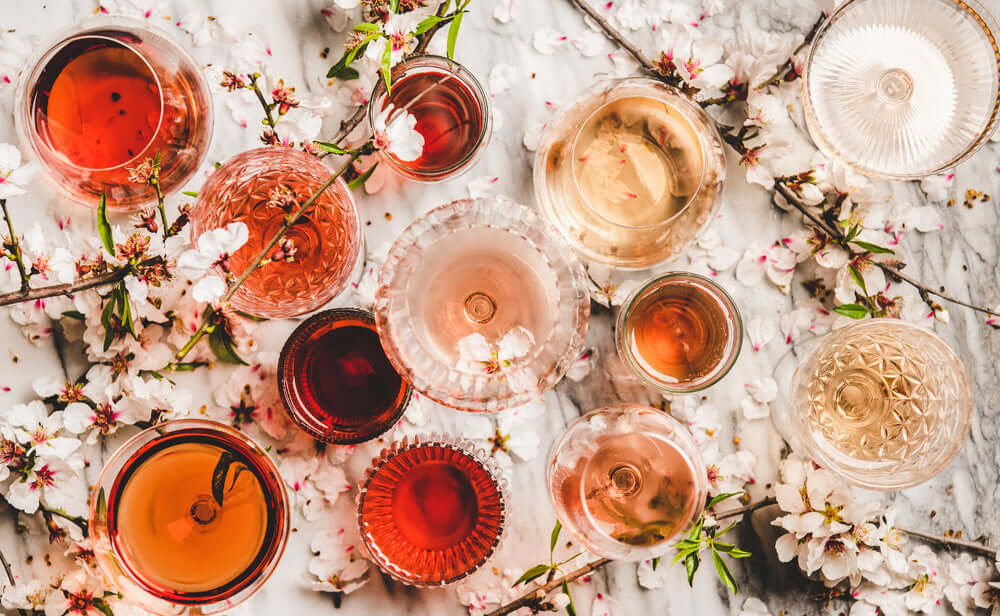We Explain Perfume Concentrations through the Medium of Drinks

Eau de Toilette vs. Eau de Parfum: what's the difference and does it matter?
We get it - it’s confusing. When buying a perfume there's loads to navigate: the names, the fragrance families, the ingredients, the notes. But also the difference between an Eau de Cologne and Eau de Toilette. What exactly do terms like 'Eau de Parfum' mean? How do they affect how long a perfume lasts on the skin?
We’re here to explain. And to do so we’re going to talk about drinks.
Phrases like ‘Eau de Parfum’ usually refer to the concentration of a scent ie. how much aromatic stuff there is in the bottle compared to other ingredients like alcohol or water.
As a rule of thumb, the more concentrated the scent, the denser it might be and the more long-lasting. So if all-day lasting scents are a priority for you, you want to be looking for higher-concentration options.
Scents are typically blended at anything from 5% up to 25%.
Watch our quick guide here, or read on....
In order of concentration they are:
Eau de Cologne is like……. A beer

Free and easy, these have the lowest concentration of scent, from 5-10%. You can splash them on and top-up throughout the day. They’re great in summer if you’re getting hot and sticky and want a cool-down, especially as they often smell citrussy.
This concentration links with Eau de Cologne’s historic origins as a refreshing pick-me-up to be used alongside or as an alternative to washing your body with water. Eau de Colognes came in big bottles often with a pourer because you would be really liberal in dousing yourself with them.
Watch out: Eau de Cologne also describes a classic style of fragrance, often containing citrus oils, neroli (a flower from the orange tree) and sometimes petitgrain (the twigs from bitter orange trees). Modern Eaux de Colognes in this style can also include newer scent ingredients that make them actually very powerful and all-day lasting. Scent: it’s contradictory.
Eau de Toilette is like…. a glass of wine

Coming in at 10-15% this is used to be a common entry-point for fragrance. They were really popular in the 1960s and 60s as fine fragrance began to democratise through the mass market. In recent years they've been less on trend as a lot of people want something with more oomph. Eau de Toilette has decent body but is still light, as you might get from a nice glass of white wine.
The name comes from the historic practice of the ‘Toilette’ which used to describe the whole of your vanity or self-care routine. Think Jane Austen protagonist. The toilette would include skin preparations, hair combs, scented toilet waters, rose waters and any subtle cosmetic preparations.
Eau de Parfum is like….a cocktail or spirit and mixer

Coming in at around 15-20% concentration, Eau de Parfum will usually deliver a longer-lasting, more intense scent. Choose your cocktail of choice here. We've gone for a strong G&T.
At Diem we blend most of our scents at 20% as we believe this is an optimal concentration for longevity. Some of our fragrances with delicate top notes are boosted to 25% so we can ensure they are as long-lasting as their peers. We don’t talk about individual percentages, as we don’t believe more is always better or higher quality, and we want to make it easier to pick up and enjoy a perfume, not add layers of unnecessary detail or suggest that the 25% ones are 'better.'
Parfum is like…. a whisky on (or off) the rocks

Ok, it might not get to the 40% of a neat shot of scotch, but think very concentrated and potent, just like a vodka on ice. Parfum usually comes in the smallest of bottles as it is so concentrated, typically at 25% even more. Classic fragrance houses used to package them in tiny and beautiful stopper bottles so you could dab them on pulse points, rather than spraying on. They were to be used sparingly.
Today they are as likely to come in a spray atomiser bottle. The same type of product might be called an 'Extrait' or an 'Absolute' or 'Absolue' to communicate the idea that these scents are the most full-bodied of essences.
Parfum is perceived as precious, so the language around this type of product has really exploded as brands differentiate their version from everyone else's.
Interestingly, if you want a scent that projects, this may not be the best option, because parfum is often less volatile than other strengths like an Eau de Toilette. They might hover closer to the skin so you have to lean in closer to smell them, where they offer intensity and complexity.
Here's a final caveat - sometimes Parfum ISN'T any stronger than an Eau de Toilette, instead it might be a different formulation of a perfume concept, positioned closest to the creators 'art', the essence of what they wanted to achieve.
So as a rule of thumb, if you want your scent to run a marathon, not a sprint, go for one of the higher concentrations. If you love refreshing through the day with scent and Eau de Toilette is fine. But as every perfume follows its own rules, don't worry too much and go with what you love the smell of, even if it's not the most expensive version.

